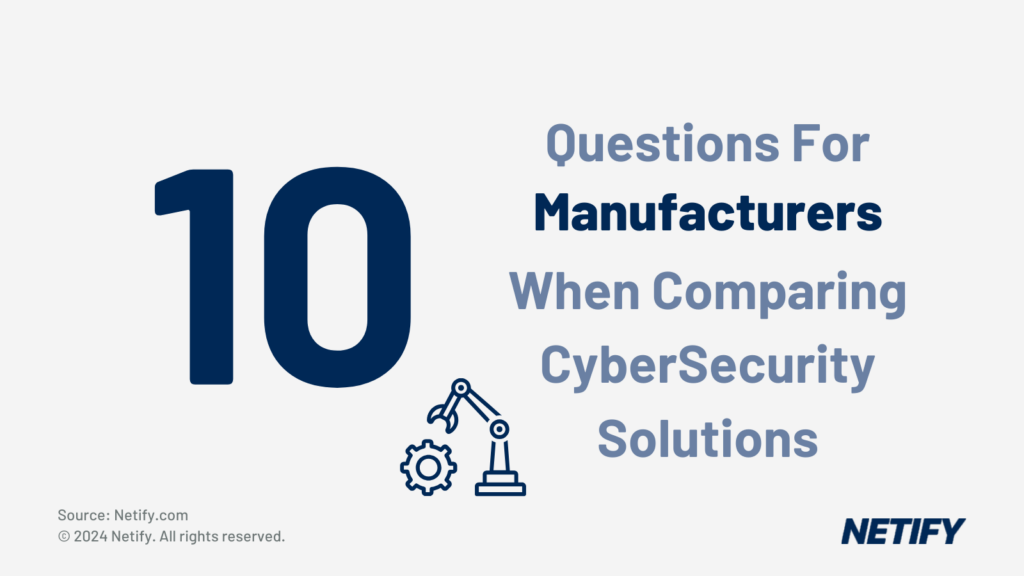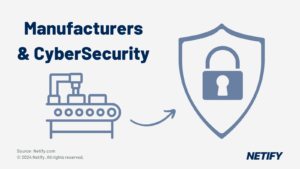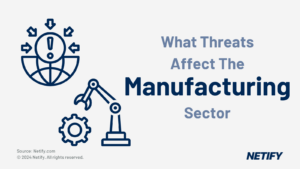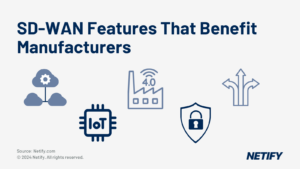The 10 questions for manufacturers to ask when comparing cybersecurity solutions are:
|

When choosing what cybersecurity solutions to implement within an SD-WAN-Cybersecurity ecosystem, you should have some queries at the ready. Here are ten questions, broken into relevant areas, to help you make the right choices. What assets should be protected?
Table of Contents
Question 1: Do you have full visibility across your organisation’s technology and site real-estate?
Because of the nature of a manufacturing company, there will be many sites, warehouses, and offices (including remote and home offices). Add to this the vast array of endpoint types that are connected across the SD WAN. According to research, 78% of organizations have only partial visibility of their OT environments. Without full visibility, any parts of the infrastructure that cannot be seen also cannot be protected. Visibility of this expanded network of devices, people, and places is vital to ensure that a zero trust security architecture can be implemented.
Question 2: Have you carried out a risk assessment across your supply chain?
Findings from an IBM report show ransomware hackers have attempted to “fracture” global supply chains and are doing so by targeting manufacturing. The manufacturing supply chain is typically complex. This complexity tends to increase as manufacturers compete in a global marketplace to satisfy customer expectations, speed up lead times, and expand products and service ranges. Supply chains are a point of risk for manufacturers and this risk has to be identified to understand the cybersecurity vendors needed to mitigate this risk.
Question 3: Who needs privileged access and under what conditions
Many cyber-attacks exploit the human factor: this includes insider threats. An analysis by the U.S. Cybersecurity and Infrastructure Security Agency (CISA), stresses the manufacturing sector experiences the highest level of insider threats. The report suggests risk analysis and identification of critical assets can help to determine the information needed to apply the principle of least privilege and focus security measures to help mitigate insider threat.
Question 4: What data protection regulations do you need to adhere to?
Manufacturing has to adhere to a mix of general data privacy regulations alongside more specific regulations and standards designed for production environments. When choosing your manufacturing cybersecurity solutions, make sure the functionality maps to these specific regulations.
Question 5: Would a Third-Party Risk Management Program (TPRM) add value to your compliance mapping?
Help from a TPRM allows you to cross-reference compliance requirements with security assessments. Going through a TPRM process provides actionable insights into how to meet regulatory requirements with the right level of security. The work carried out under question 4 will help during this process.
Question 6: Does the SD WAN under evaluation support the need for centralization of security solutions?
Manufacturing companies are some of the most distributed types of organisztions around. This distributed industry is the perfect environment for an SD WAN, but this distributed connectivity also means that security measures must be able to be centrally managed, deployed, updated, etc. A cloud-based model of cybersecurity solution deployment and management is a must for the level of scalability needed for manufacturing to service across its spread-out real estate.
Question 7: What are your most critical applications and what level of protection is needed?
SD WAN is a great benefit in connecting across remote sites and industrial control systems including ICS and SCADA. Carry out a risk assessment to identify critical applications and determine the most appropriate cybersecurity requirements.
Question 8: What type of cybersecurity solutions do you need to meet regulations?
Map back to question 4 to work out which cybersecurity solutions will meet the regulatory requirements on data security, data privacy, and infrastructure security. Using information gathered for question 6 will also help determine the best cybersecurity solutions that are in line with your SD WAN choice.
Question 9: Will you need third-party help in deploying and/or managing cybersecurity solutions?
The skills gap in cybersecurity is estimated to be around 2.7 million worldwide; this is slightly lower than in 2020 but it is still impacting organizations including manufacturing. Making the right cybersecurity choice is difficult if you do not have experience in using cybersecurity solutions. It is even more difficult to optimize the use of the chosen tools and the event data and alerts that they will generate. If you use a third party to manage your security services, make sure you choose a solutions partner that has experience working in the manufacturing sector and who understands the unique needs of the sector.
Question 10: Can you monitor your entire expanded manufacturing capability?
As OT and IT merge, it is important that you can have centralised visibility of all your OT activity. Look for cybersecurity solutions that offer this level of expanded visibility and can gather, analyse, and provide actionable insights to prevent and respond to cyber-threats.


